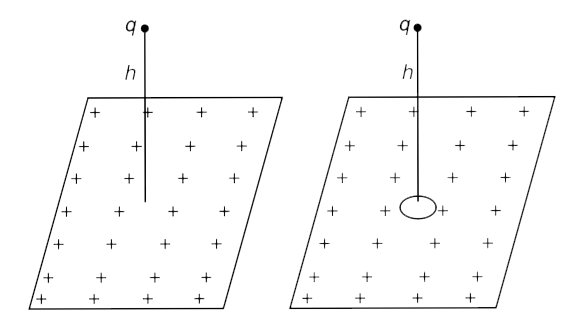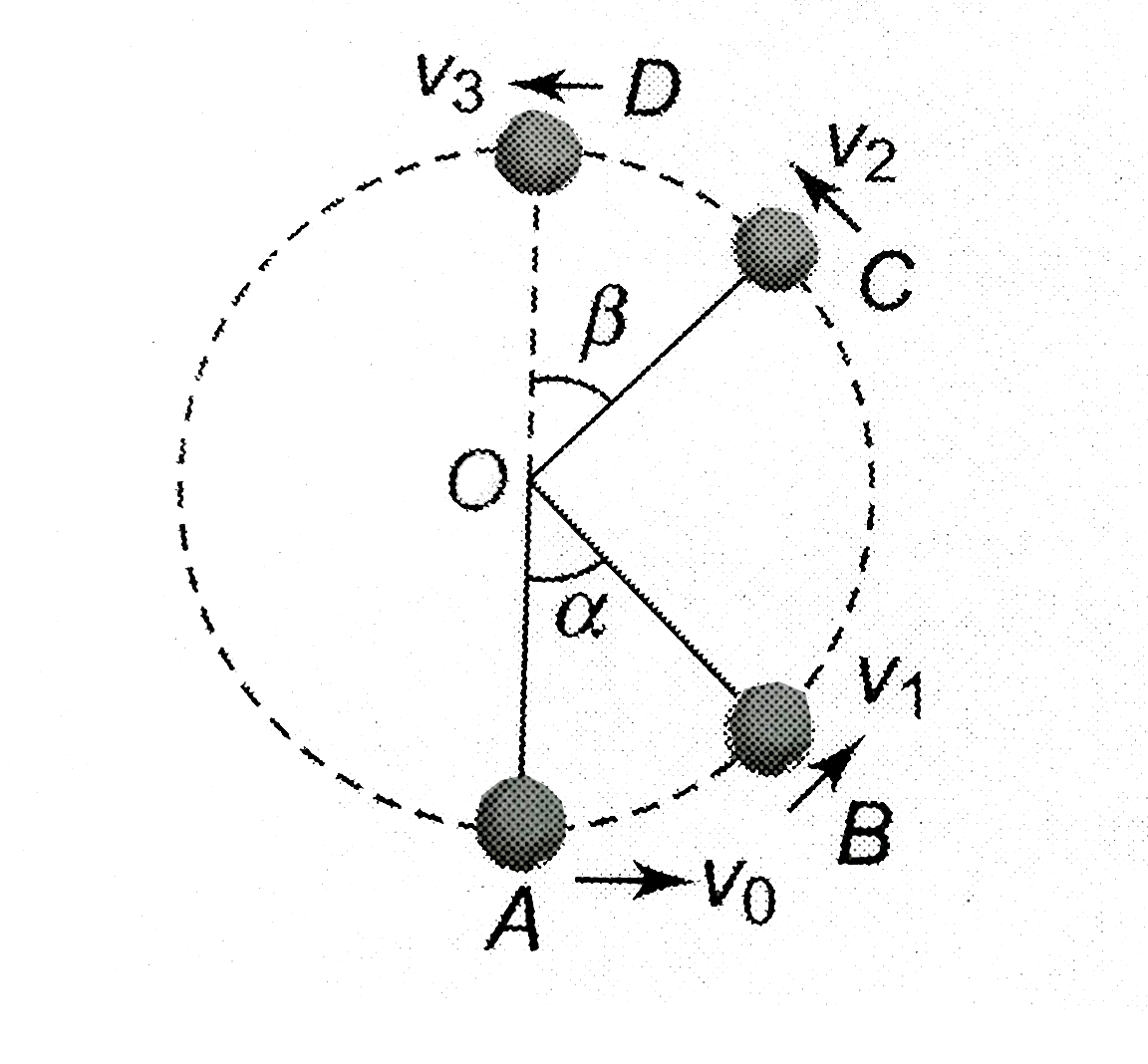A small charged ball is in state of equilibrium at a height h above a large horizontal uniformly charged dielectric plate having surface charge density of σC/m2. (a) Find the acceleration of the ball if a disc of radius r (ltlt h) is removed from the plate directly underneath the ball. (b) Find the terminal speed (V0) acquired by the falling ball. Assume that mass of the ball is m, its radius is x and coefficient of viscosity of air is η. Neglect buoyancy and assume that the ball acquires terminal speed within a short distance of its fall.

The correct Answer is:(a). gr22h2
(b). V0=mgr212πηxh2
Topper's Solved these Questions
Similar Questions
A ball of radius R is uniformly charged with the volume density ρ. Find the flux if the electric field strength vector across the balls section formed by the plane located at a distance r0<R from the centre of the ball.
View SolutionA ball of mass m having a charge q is released from rest in a region where a horizontal electric field E exists.
(a) Find the resultant force acting on the ball.
(b) Find the trajectory followed by the ball.
View Solution
Knowledge Check
A small charged ball is hovering in the state of equilibrium at a height h over a very large horizontal uniformly charged sheet. If a disc of radius r (r<<h), is removed from the plate directly underneath the ball, then the acceleration of the ball will be
Ag2(rh)2Bg2(hr)2Cg4(rh)2Dg4(hr)2A spherical ball of density σ is freely falling in a viscous liquid of density p(p<σ). The initial acceleration of the ball will be
A(p−σp)gB(σ−pσ)gC(p−σσ)gD(p+σσ)g
A ball of mass m having a charge q is released from rest in a region where a horizontal electric field E exists.
(a) Find the resultant force acting on the ball.
(b) Find the trajectory followed by the ball.
View Solution
A ball is attached to a string of length L and the ball is given velocity v0 at its lowest point. Find the speed of the ball at point B,C and D. Assume that the ball is moving in vertical circle.
View SolutionA baseball is dropped from the roof of at all building. As the ball falls, the air exerts a drag force that varies directly with the speed as f=qv is a constant. Show that the ball acquires a terminal speed. Find the speed of the falling ball as a function of time.
View SolutionWhen an uncharged conducting ball of radius R is placed in an external uniform electric field, a surface charge densityh σ=σ0cosθ is induced on the ball's surface charge (here σ0 is a constant, θ is a polar angle). Find the magnitude of the resultant electric force acting on an induced charge of the same sign.
View SolutionTwo small identical metal balls of radius rare at a distance a (a<<r) from each other and are charged, one with a potential V1 and the other with a potential V2. The charges on the balls are:
View SolutionA small ball of mass m=21g suspended by a insulating thread at a height h=12cm from a large horizontal conducting plane performs small oscillations (figure) . After a charge q had been imparted to the ball, the oscillation period changed η=2.0 times. Find q.

View Solution
